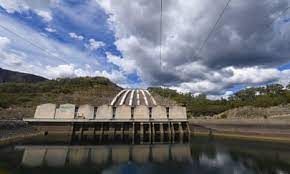
Snowy Hydro’s management team is resetting the delivery timeline and budget for the Snowy 2.0 project with its principal contractor, Future Generation Joint Venture (FGJV), as part of an ongoing project review. The reset – which could see the project delayed by up to two years - aims to place the clean energy infrastructure project on a robust and sustainable footing for FGJV to progress the schedule in a realistic and productive manner, Snow Hydro said.
Despite significant progress made by FGJV on Snowy 2.0, delays to the contracted schedule and likely cost impacts beyond the contingency allowed are under review by Snowy Hydro. Snowy Hydro cites four broad categories of factors contributing to schedule delays and likely cost increases: the mobilization and resourcing implications of the COVID-19 pandemic, global supply chain disruption and inflation affecting the cost and availability of a skilled workforce, materials, and shipping, design elements requiring more time to complete due to their technically complex nature, and variable site and geological conditions, particularly the soft ground encountered that is delaying tunnel boring machine (TBM) Florence’s progress at Tantangara.
Snowy Hydro expects the timeline for full commercial operation to be delayed by a further 12-24 months from the current publicly released dates. The milestone for the first power is now estimated to be from June 2028 to December 2028, and the commercial operation of all units is estimated to be delayed until December 2029. More details on the budget implications of the project reset are expected to be communicated with key project stakeholders by July 2023.
Snowy Hydro CEO Dennis Barnes emphasized the project's critical importance to the transition of Australia's electricity grid and the need for a safe, efficient, and realistically achievable timeframe to enable orderly planning for all stakeholders. He also noted the project's positive progress, despite the challenges posed by the pandemic and other factors.
“While many other major infrastructure projects have been impacted by the same challenges, Snowy 2.0 continues to make positive progress,” Barnes said. “Snowy 2.0 is providing significant employment and economic benefits both regionally and domestically. There are currently over 2,400 people employed on the project and thousands more jobs generated indirectly through supply chains and support services.”
Barnes explained that the one of the project's TBM’s - Kirsten - has already tunnelled 2.9 km to reach the underground power station cavern complex, and the excavation of intakes at Talbingo and Tantangara are proceeding well. The company is expecting to shortly commence excavation of the 6km tailrace tunnel that will feed into Talbingo Reservoir.
Snowy 2.0 is Australia’s largest renewable energy project. It will link Tantangara Reservoir (top storage) with Talbingo Reservoir (bottom storage) through 27km of tunnels and a power station with pumping capabilities.